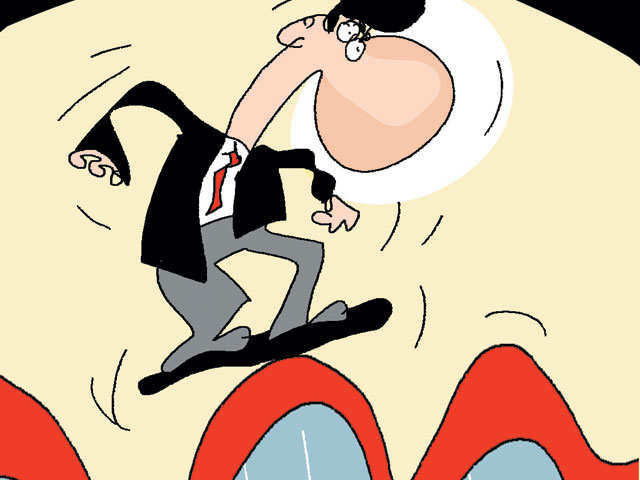INSUBCONTINENT EXCLUSIVE:
By Robert BurgessHardly a day went by in 2017 without some pundit bemoaning the lack of volatility in financial markets
They worried about complacency, implying that the Goldilocks-like environment that enveloped markets was a recipe for disaster
With volatility on the rise, you would think the handwringing would diminish
Now, the pundits are worried the big swings in asset prices of the last few months portend doom.
The simple fact is the recent swings are
closer to what is considered normal, and investors should be thankful
What happened last year was abnormal
Rising volatility will lead to a healthier market
No longer will everyone be on the same side of every trade, taking the same bet that an individual stock or an index will go up or down
That should result in better “price discovery,” which is a fancy way of saying greater differentiation in the values between good and
bad stocks.
A primary complaint about low volatility was that it favored the rise of passive investing strategies such as exchange-traded
funds, which try to mimic the performance of indexes and don’t reward strong companies or punish those that are weak
By one measure, total assets in index funds and ETFs have soared to $6.6 trillion
The spread of this blind approach to investing led the analysts at Sanford C
to publish a research report in 2016 with the title “The Silent Road to Serfdom: Why Passive Investing is Worse Than Marxism.” They
wrote that “a supposedly capitalist economy where the only investment is passive is worse than either a centrally planned economy or an
economy with active market led capital management.”
Perhaps the first sign markets may be getting back to normal is the performance of
A Hedge Fund Research index of equity managers gained 9.98 per cent last year, woefully trailing the SP 500 Index’s 19.4 per cent gain
But since the turmoil in markets began at the start of February, the hedge fund index has lost just 2.22 per cent through April 11, holding
up better than the 6.37 per cent drop in the SP 500, which can be used as a proxy for passive investments
Bank of America data show that 57 per centof all large-cap mutual funds beat benchmarks in the first three months of the year, the best
first quarter since 2009, according to Bloomberg News’s Lu Wang.
Somewhere along the line, the word “volatility” became code for a
The reality is that rising volatility as measured by the CBOE Volatility Index, or VIX, “is only a reflection of volatile movements in the
market -- it is not a predictor of future returns,” David Kotok, the head of Cumberland Advisors, wrote in a Friday note to the wealth
management firm’s clients
Although the VIX has risen from a record low of below 10 in November to above 30 in February, that doesn’t necessarily portend trouble
Kotok points out that whenever the VIX has doubled in a period of three months, the SP 500 has gained an average of 6.31 per cent in the
The SP 500’s average six-month return is 4.37 per cent since 1990.
The reasons for last year’s low volatility are pretty apparent
First, there’s little room for surprise when the Federal Reserve is telling you what it’s going to do, when it’s going to do it and by
Second, the Trump administration was focused on such market-friendly moves as reducing regulations and cutting corporate taxes.
But now,
markets are getting back to normal
The ride may feel extra bumpy and gut-wrenching, but that’s only because of last year’s abnormally calm conditions
At 17.5 on Friday, the VIX isn’t far from its historical average of 19.35
I say embrace the current conditions, if only because markets are fun again.

